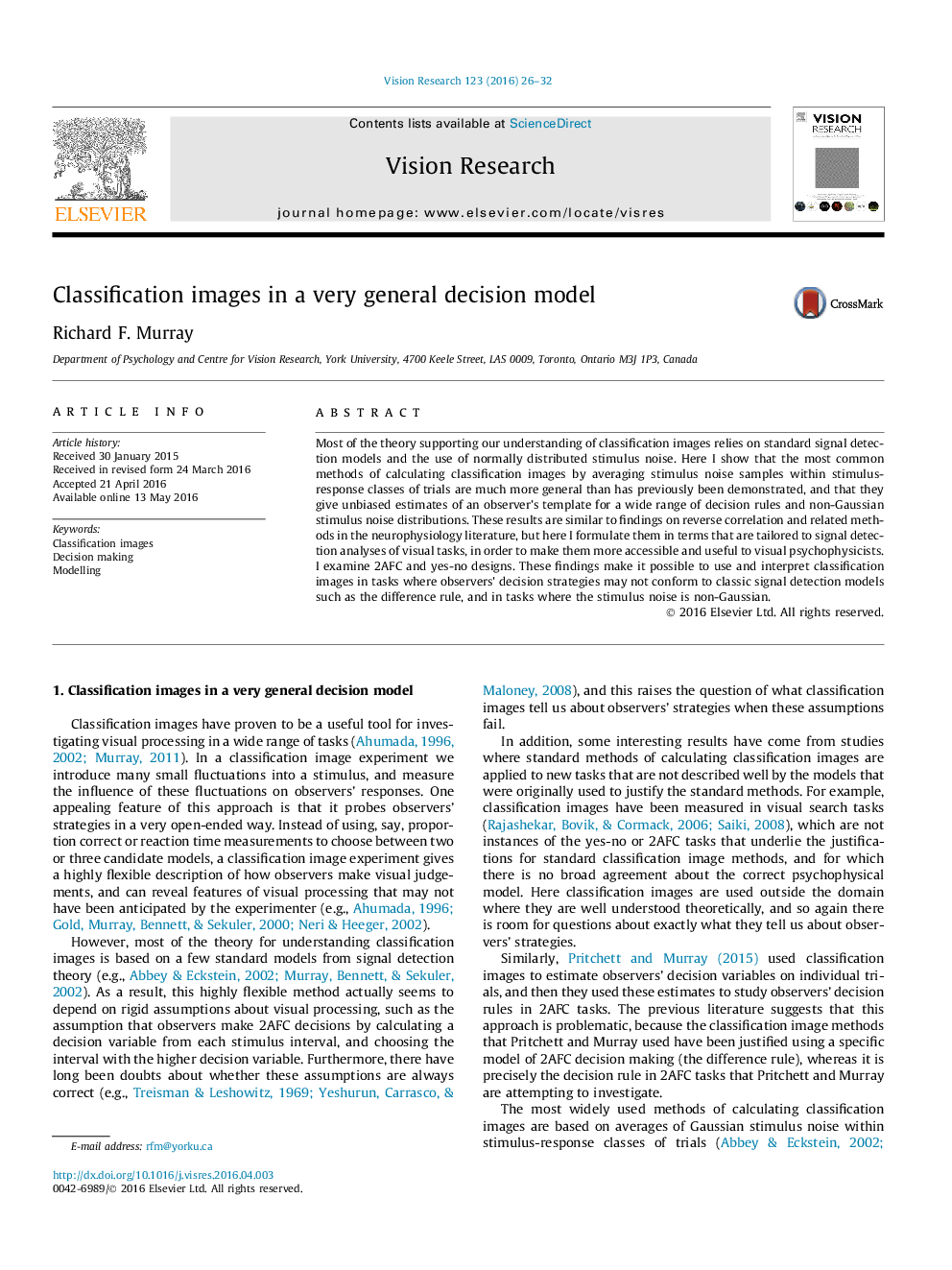| Article ID | Journal | Published Year | Pages | File Type |
|---|---|---|---|---|
| 6203015 | Vision Research | 2016 | 7 Pages |
Most of the theory supporting our understanding of classification images relies on standard signal detection models and the use of normally distributed stimulus noise. Here I show that the most common methods of calculating classification images by averaging stimulus noise samples within stimulus-response classes of trials are much more general than has previously been demonstrated, and that they give unbiased estimates of an observer's template for a wide range of decision rules and non-Gaussian stimulus noise distributions. These results are similar to findings on reverse correlation and related methods in the neurophysiology literature, but here I formulate them in terms that are tailored to signal detection analyses of visual tasks, in order to make them more accessible and useful to visual psychophysicists. I examine 2AFC and yes-no designs. These findings make it possible to use and interpret classification images in tasks where observers' decision strategies may not conform to classic signal detection models such as the difference rule, and in tasks where the stimulus noise is non-Gaussian.
